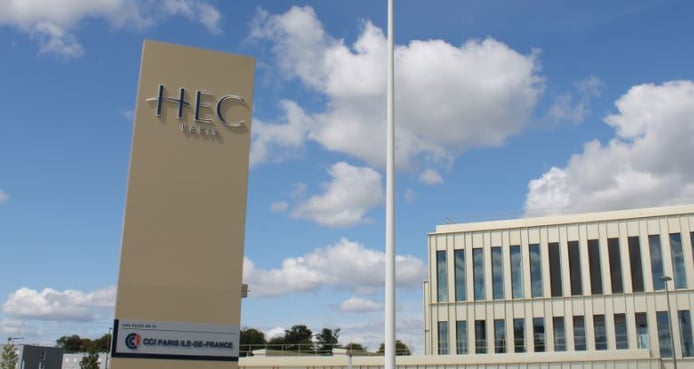As with businesses, attractiveness and visibility on the Internet have become major issues for French schools and universities.
Today, they appear inescapable for the development strategies of these (sometimes venerable) institutions.
Higher education institutions - whether post-baccalaureate or post-pre, public or private, historically renowned or seeking recognition - are now in a frantic race to seduce (top) students.
At the same time, national and international competition among institutions is increasing. In the face of these realities, doing nothing can be very risky.
For schools immersed in the heart of this dynamic, Inbound Marketing represents the right solution to enhance the value of the courses on offer and establish its positioning at the forefront of this race for attractiveness.

1 - How are institutions investing in their attractiveness?
Higher education institutions are competing in this race for attractiveness on many fronts. For example, the majority of business schools, are increasing their degree of international openness. This is the case of HEC, which offers its students more than 110 partnerships with foreign universities. ESSEC, meanwhile, opened a brand new campus in Singapore in 2015.
In addition, in order to exist in international rankings that place research on a pedestal, institutions have invested massively in innovation. Engineering and business schools are competing for the best research faculty.
.Other institutions such as Centrale and Supelec decided to join forces in order to carry out together " ambitious projects that they could not achieve alone" according to Hervé Biausser (Director of CentraleSupelec).
2 - Competition in the higher education market forces the need to be attractive
While " intra-segment " (between schools in the same industry) is weakening, higher education institutions are seeing " inter-segment " competition increase.
In fact, it is not uncommon anymore, to see hospitality, design and engineering schools offering management training encroaching on those provided by business schools.
As well as some business schools are embarking on training in big data, as at Grenoble Ecole de Management, and machine learning.
In addition to this domestic competition between the various specialized segments, there is also very strong international competitive pressure. " If we watch the trains go by while the influence of countries like China, the United States or Korea rises, we will be laminated " says Bernard Ramanantsoa (former director of HEC Paris).

So doing nothing in the face of these competing pressures can be costly or even dangerous. This is what the cost of doing nothing represents. If an institution" lets the trains ", it risks being overtaken by others who are investing heavily in their attractiveness and their recognition (both national and international).
So, Bernard Ramanantsoa evokes the example of Tsinghua: " Take Tsinghua, in Beijing: twenty-five years ago, it was just a college in the middle of a field, today, they are in the top 3! ".
In this competitive and ever-changing environment, some institutions are betting on Inbound Marketing.
3 - The bet of Inbound Marketing to enhance its comparative advantages
The changes that have altered the higher education landscape in France have been accompanied by changes in promotional practices.
The so-called " outbound " techniques of traditional marketing such as flyers, open houses, booths at student fairs, etc. are proving to be increasingly expensive, intrusive and time consuming.
Students now do their own research on the internet and the Inbound approach has become the right solution to boost the attractiveness of institutions by promoting their comparative advantages to students (and their parents).
As long as it's about bringing in candidates, we'll call this approach Inbound Recruiting, more than Inbound Marketing.
The virtues of Inbound Recruiting to increase the attractiveness of an institution are multiple :
- It helps attract more qualified students. Students look up and sort through the various courses offered on the internet before even making contact with the institution.
By determining the targets ( the candidate personas) we offer content adapted to their needs. This targeting then allows to generate traffic called " qualified " on its website. This traffic will then attract more prospects who are better informed and more easily converted into students and then alumni (the equivalent of employer brand ambassadors in Inbound Recruiting).
- It offers the ability to tailor content to the different stages of the acquisition tunnel and customize the candidate experience based on those stages.
For example, there's no need to describe the basic Bachelor's 3 course to a Master's student.
By tuning context and content, Inbound Marketing allows you to address the right information to the right people and most importantly, at the right time.
- It gives a differentiated understanding of the decision process of " buyers " and allows a fortiori to shorten the sign-up process by segmenting its contacts and addressing them with the right content at the right time, adapting " call to actions " etc.
- It gives accurate data and makes it easy to calculate the return on investment (ROI) of the marketing campaign. Coupled with a marketing automation tool, the institution can have an overview of its acquisition tunnel, and identify the most profitable channels.
As we can see, the Inbound Marketing approach has a wide range of benefits for higher education institutions in their quest for attractiveness.
It seems to be the approach to favor in order to combine clarity, efficiency, and cost effectiveness.








